
2020 Fluoropolymer Technology Highlights by IDTechEx
CAMBRIDGE, UK / AGILITYPR.NEWS / December 08, 2020 / A fluoropolymer is an organic polymer containing fluorine atoms. Fluoropolymers are typically available as liquids and solids, but new fluoroelastomers are getting interest. With fluoropolymers, the stability that comes from many fluorine-carbon bonds can be exhibited in many forms including formulations involving other atoms such as sulfur and chlorine that create or extend certain electrical and physical capabilities.
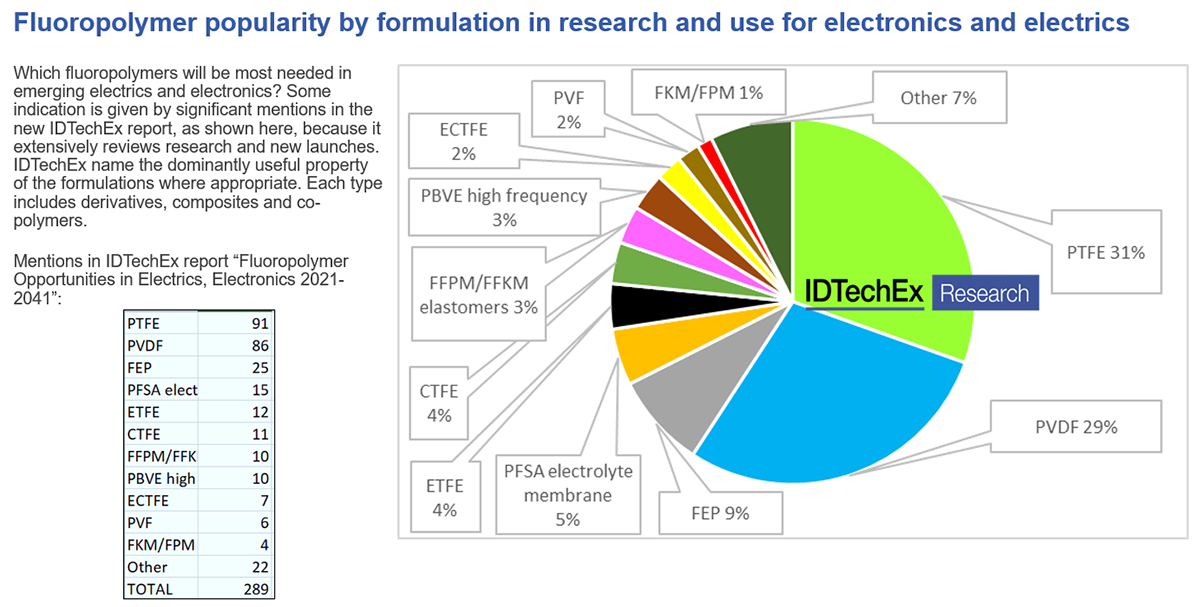
Caption: Fluoropolymer popularity by formulation in research and use for electronics and electrics. Source: IDTechEx Research: www.IDTechEx.com/Fluoro
Fluoropolymers may be mechanically characterized as thermosets or the more-desired thermoplastics. Fluoropolymers can be homopolymers, copolymers, tripolymers and composites. They can be crystalline or amorphous. Chemical or physical surface treatment can greatly improve some properties of interest in electronics and electrics. Here then, we have an almost infinite choice of options to tailor these stable, versatile chemicals for specific uses in electronics and electrical engineering even to the optical transition of terahertz devices. Yes, they have long been used in optics too. See the new IDTechEx report “Fluoropolymer Opportunities in Electrics, Electronics 2021-2041” for more.
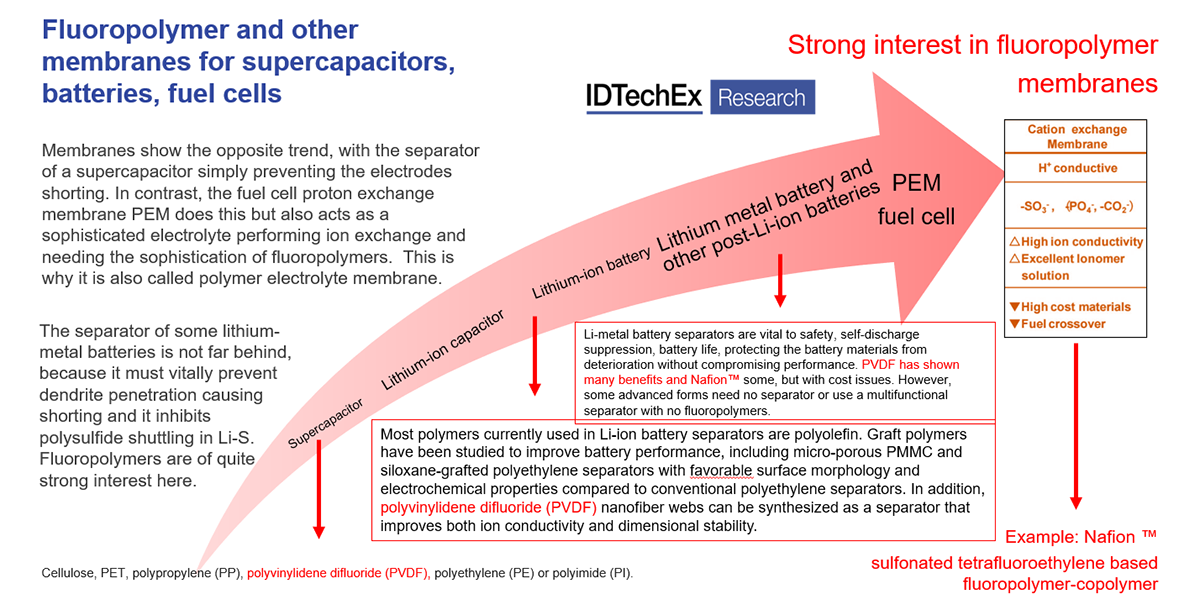
Caption: Fluoropolymer and other membranes for supercapacitors, batteries, fuel cells. Source: IDTechEx Research: www.IDTechEx.com/Fluoro
Fluoropolymers are specialty polymers which represent less than 4% of all macromolecules. In 2022, their production may be around 405 000 tonnes with PTFE still dominant but PVDF and FEP growing share. This is largely because 2020 has seen applications in electronics and electrical engineering becoming more important. For example, they are being designed into 5G communications equipment and vehicle autonomy radar as low loss dielectrics and thermal barriers. Indeed, 2020 saw the idea of 6G communications getting serious attention, Samsung saying mass deployment for 6G smartphones, etc. may be as early as 2030. That may be as high as THz frequencies and certainly a whole new field of THz electronics is opening up, needing not so much the electronics fluoropolymers as the optical ones like Cytop™ because Terahertz adjoins far infrared in frequency. It is an interesting merging of the world of loss factor/permittivity and that of refractive index/ transparency.
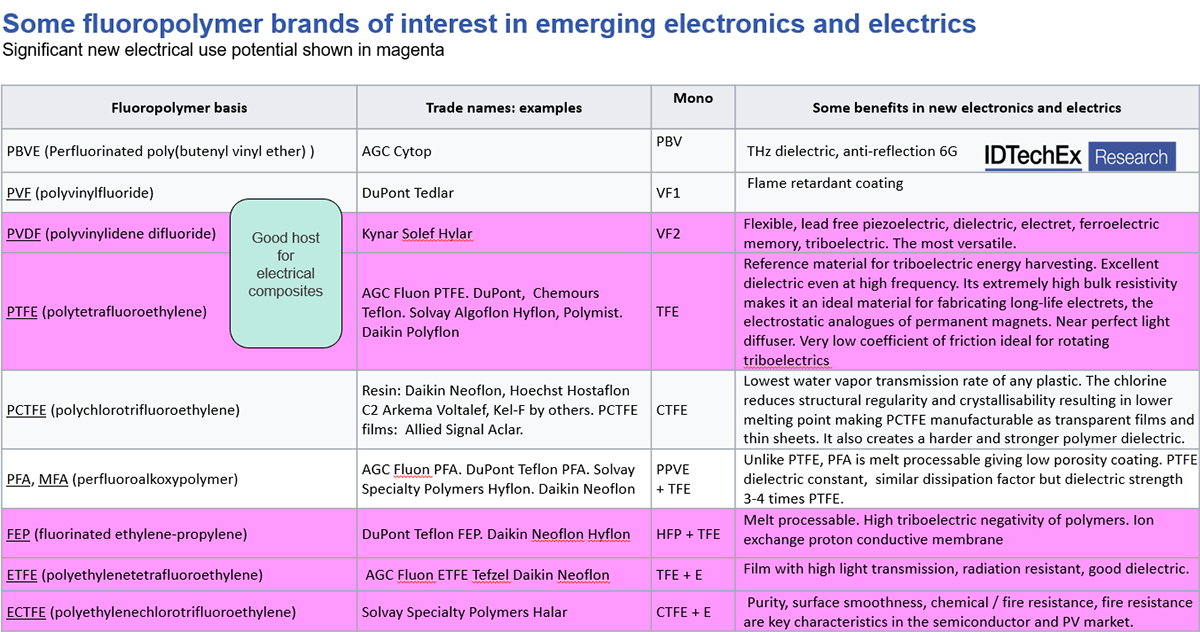
Caption: Some Fluoropolymer brands of interest in emerging electronics and electrics. Source: IDTechEx Research: www.IDTechEx.com/Fluoro
Good guy and bad guy
The bad image of fluoropolymers is that they emit toxic gases if overheated from wrong use or wrong disposal. However, the good image is more dominant nowadays such as non-slip, even bacteria slide off them, no emission of volatile organic compounds VOCs, resistant to almost all chemicals, and the gymnasts of electricity. They, therefore, appear in more of the growing applications such as medical, electric vehicles, lithium batteries and newer better batteries coming later and also fuel cells. Their versatility is boosted by new deposition coming in such as RF sputtering (into cracks and around corners) and 3D printing (complex shapes. New formulations found uses in 2020 such as glass and ceramic fiber fluoropolymer composites and biodegradable forms. Recycling became serious. Triboelectric fluoropolymers promised COVID-19 killing, self-powered face masks to 1MW ocean wave blankets making electricity but all remained stuck in the laboratory. Triboelectric sensors, energy harvesting and electrostatic filters are still tough to make with consistent performance and competitive cost. They make bad electricity (spiky, high impedance, high voltage) calling for expensive electronics to make the desired when used for energy harvesting and sensors.
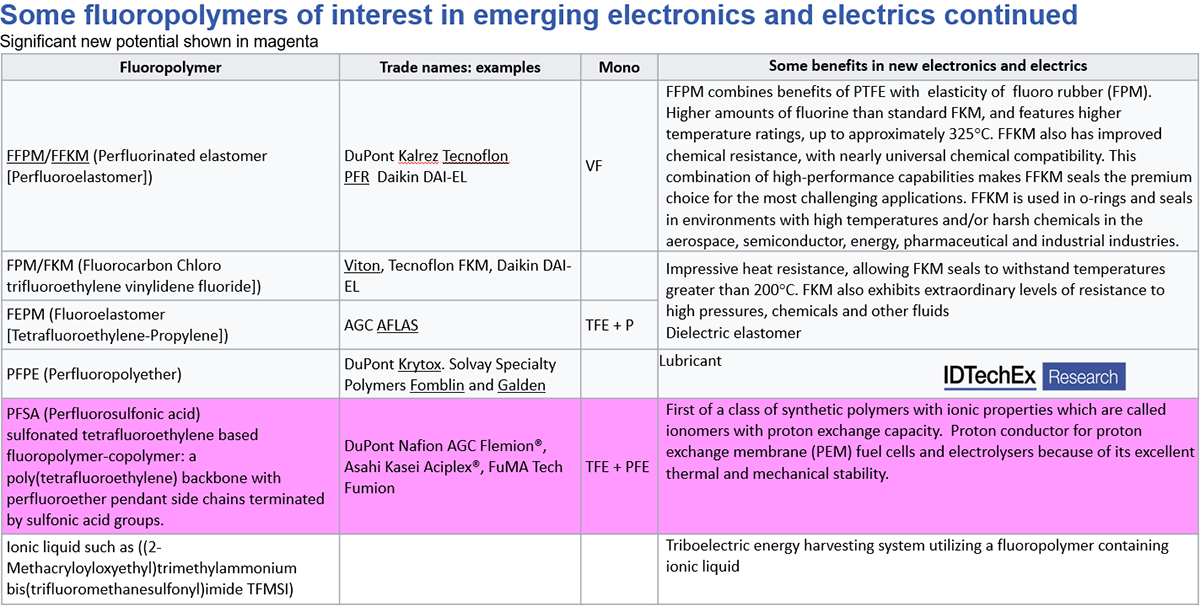
Caption: Some Fluoropolymers of interest in emerging electronics and electrics. Source: IDTechEx Research: www.IDTechEx.com/Fluoro
Gaps in the market
Latest Nafion™ PTFE won a prestigious prize in 2020 for excellence as a fuel cell membrane. The biggest threat to fluoropolymers remained lower cost alternatives. Examples are as a new BASF lithium-ion battery electrode binder and new battery and fuel cell membranes without fluoropolymers. Another example is an electrostatic face mask for particulates was newly on sale in China that used alternatives that worked better than fluoropolymers and were cheaper. Dielectric elastomer generators DEG received research funding in 2020. These squashy, elastic capacitors make electricity when moved. DEG motion sensors and kW DEG power blankets on water waves in the laboratory have been demonstrated. MW one day? However, the new fluoropolymer elastomers are too expensive. The cost of fluoropolymers is often in the processing not the monomer cost. Reducing the cost of technical fluoropolymers is a big opportunity.
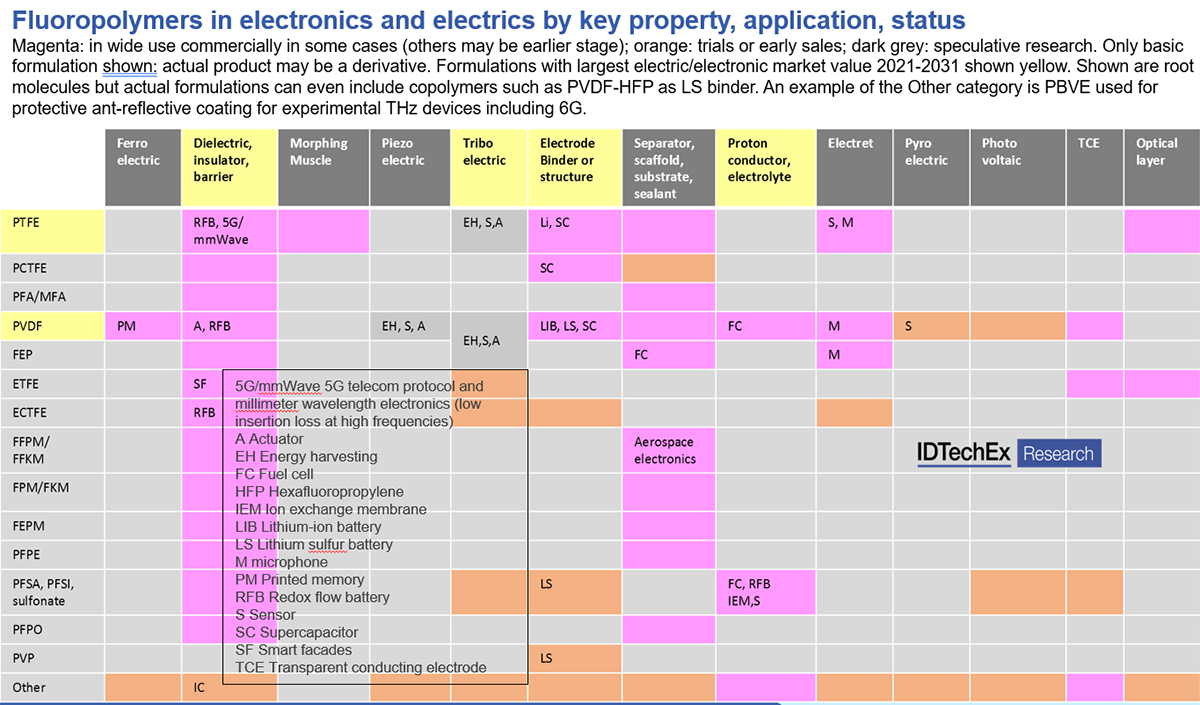
Caption: Fluoropolymer in electronics and electrics by key property, application, status. Source: IDTechEx Research: www.IDTechEx.com/Fluoro
For more information on this report, please visit www.IDTechEx.com/fluoro or for the full portfolio of research available from IDTechEx please visit www.IDTechEx.com/research.
About Us
IDTechEx guides your strategic business decisions through its Research, Consultancy and Event products, helping you profit from emerging technologies. For more information on IDTechEx Research and Consultancy, contact research@IDTechEx.com or visit www.IDTechEx.com.
Social Media Links:
Twitter: https://www.twitter.com/IDTechEx
Contacts
Links